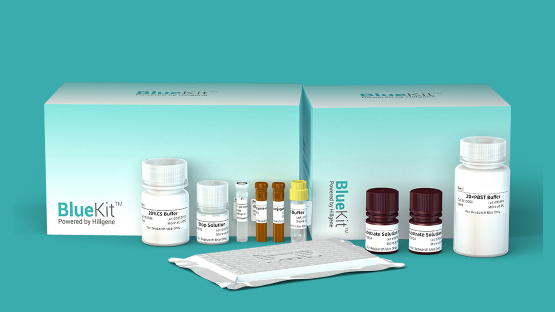Introduction to Proteases in Biological Systems
Proteases, a diverse group of enzymes, are pivotal in numerous biological processes, from digestion to cell signaling. They function by catalyzing the cleavage of peptide bonds in proteins, thus playing a vital role in maintaining cellular homeostasis. Proteases are classified based on their catalytic mechanisms and substrate specificities, with serine proteases like trypsin being among the most studied. This article examines the unique attributes of trypsin in contrast to other proteases, considering aspects such as structure, functionality, and applications.
Trypsin: The Gold Standard in Proteomics
Role of Trypsin in Mass Spectrometry
Trypsin leads the proteomics field due to its high specificity and efficiency in cleaving peptide chains at the carboxyl side of lysine and arginine residues. This specificity results in fragments with a positive charge at their C-terminus, advantageous for mass spectrometry (MS) analysis. In proteomics, trypsin's ability to generate peptides of optimal length enhances protein identification, a crucial aspect for cell therapy research, where accurate protein characterization is necessary.
Advantages in Protein Identification
Proteomics heavily relies on trypsin's unique properties for protein identification. Studies demonstrate that trypsin can identify over 80% more proteins compared to proteases with broader specificity, making it indispensable for researchers and suppliers in the field. Its role extends from understanding disease mechanisms to advancing therapeutic approaches, such as cell therapy.
Structural Characteristics of Trypsin
Active Site and Catalytic Mechanism
The catalytic efficiency of trypsin stems from its well-defined active site, featuring a catalytic triad of serine, histidine, and aspartate. This configuration facilitates precise peptide bond cleavage, a crucial requirement for suppliers who provide purified enzymes for research and industrial applications. The specificity of the enzyme is attributed to the presence of a negatively charged aspartate residue, which attracts positively charged lysine and arginine.
Isoforms of Trypsin
Trypsin exists in several isoforms, including cationic, anionic, and mesotrypsinogen. Each isoform serves distinct roles, with cationic trypsin being the most abundant in the human pancreas. Mesotrypsin is notable for its resistance to inhibitors, playing a specialized role in the degradation of inhibitor-rich dietary proteins. Understanding these isoforms is vital for factories involved in enzyme production for therapeutic use.
Alternative Proteases and Their Specificities
Comparison with AspN and GluC
AspN and GluC target acidic amino residues, offering complementary data to that provided by trypsin. These proteases generate complex peptide mixtures suitable for specific analytical requirements in proteomics. However, their broader specificity often results in reduced protein identification compared to trypsin.
Chymotrypsin and Broad Specificity Proteases
Chymotrypsin differs from trypsin by targeting large hydrophobic residues, such as tryptophan and tyrosine. While it holds significant catalytic efficiency, its usage is often limited to certain applications. Broad-specificity proteases like proteinase K generate highly complex peptide mixtures, presenting challenges for proteomics applications, unless used in combination with trypsin.
Sequential Digestion Techniques with Trypsin
Enhanced Protein Identification
Sequential digestion, involving the use of trypsin followed by another protease, significantly enhances protein identification. For example, predigesting with trypsin can increase protein identifications for proteinase K by 731%. For cell therapy applications, this synergy allows for more comprehensive proteomic profiling, crucial for understanding cellular mechanisms.
Protection of Peptides in Sequential Digestion
Smaller peptides generated by trypsin are protected from further digestion in sequential processes, leading to less complexity than predicted by in silico analysis. This methodology is beneficial for suppliers providing proteomic services, as it ensures higher accuracy in protein identification and characterization.
Specificity versus Broad Specificity Proteases
Proteases with high specificity, like trypsin, are favored due to their ability to produce predictable and manageable peptide fragments. In contrast, broad specificity proteases result in complex mixtures, complicating data interpretation. Factories that produce enzymes for research must consider these differences to meet the demands for highly specific proteolytic activities in various applications.
Role of Zymogens in Protease Activation
Protease Precursor Activation
Proteases are often synthesized as inactive zymogens to prevent unwanted destruction of cellular proteins. Trypsinogen, activated in the small intestine, illustrates this concept well. Understanding zymogen activation is critical for factories producing proteases for therapeutic uses, ensuring that active enzymes are supplied in controlled conditions.
Regulation by Enterokinase
Enterokinase plays a crucial role in the activation of trypsinogen, reinforcing the importance of precise regulation in protease activation. The balance between zymogen synthesis and activation ensures that proteolytic activity occurs optimally within the body, a factor pivotal for suppliers specializing in enzyme delivery systems.
Protease Inhibitors and Their Biological Functions
Control of Proteolytic Activity
Protease inhibitors are essential in controlling proteolytic activity within biological systems. They prevent uncontrolled degradation of proteins, a balance crucial in higher organisms. In cell therapy, understanding this balance is vital for developing treatments that harness protease activity effectively.
Protease Inhibitors in Therapeutics
Protease inhibitors not only have roles in physiological regulation but also in therapeutic applications. They offer potential benefits, such as preventing kidney damage from antibiotics or reducing tumorigenesis risk, indicating their importance in medical research and development.
Industrial and Biotechnological Applications of Trypsin
Role in Biotechnology
Trypsin is widely used in biotechnological processes, such as protein digestion and cell dissociation. Its specificity and efficiency make it a preferred choice for many applications, including in factories that produce cell therapy products, where precision in enzymatic activity is imperative.
BlueKit Provide Solutions
BlueKit offers comprehensive solutions tailored to meet the protease requirements of research and industrial applications. By supplying high-quality trypsin and other proteases, BlueKit ensures that laboratories and factories have the necessary tools to advance their work in proteomics, cell therapy, and biotechnology. Our commitment to quality and innovation positions us as a leading supplier, helping you achieve reliable and precise results in your scientific endeavors.
User hot search: Trypsin Kit
Post time: 2025-09-09 19:31:05











